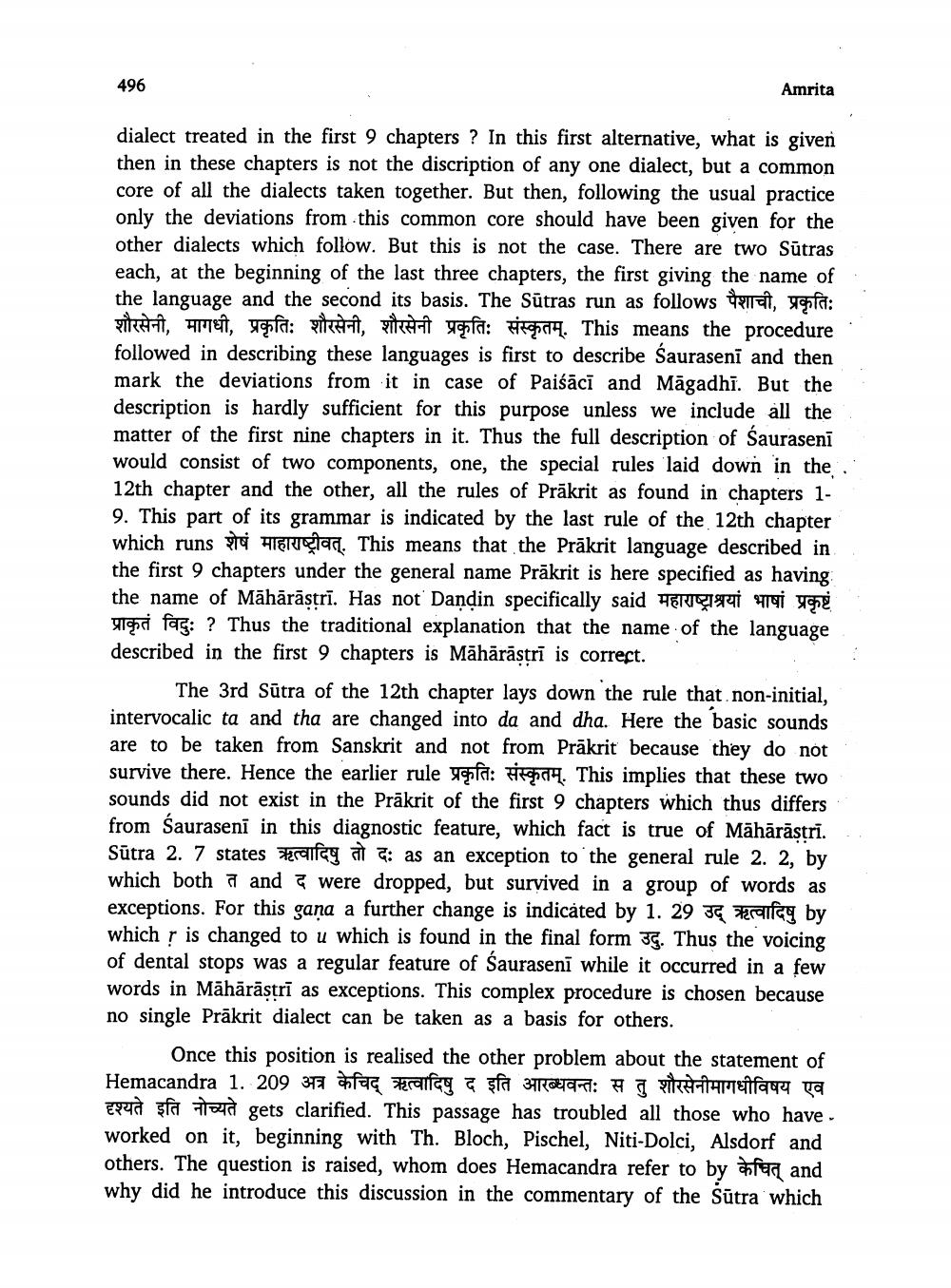________________
496
Amrita
dialect treated in the first 9 chapters? In this first alternative, what is given then in these chapters is not the discription of any one dialect, but a common core of all the dialects taken together. But then, following the usual practice only the deviations from this common core should have been given for the other dialects which follow. But this is not the case. There are two Sūtras each, at the beginning of the last three chapters, the first giving the name of the language and the second its basis. The Sūtras run as follows पैशाची, प्रकृतिः
A, AMET, ufa: ist, sich yofa: 14. This means the procedure followed in describing these languages is first to describe Sauraseni and then mark the deviations from it in case of Paiśācī and Māgadhi. But the description is hardly sufficient for this purpose unless we include all the matter of the first nine chapters in it. Thus the full description of Sauraseni would consist of two components, one, the special rules laid down in the 12th chapter and the other, all the rules of Prākrit as found in chapters 19. This part of its grammar is indicated by the last rule of the 12th chapter which runs to Heretag. This means that the Prākrit language described in the first 9 chapters under the general name Prākrit is here specified as having the name of Māhārāstrī. Has not Dandin specifically said HERICISI 410 uri ugodi fars: ? Thus the traditional explanation that the name of the language described in the first 9 chapters is Māhārāstrī is correct.
The 3rd Sūtra of the 12th chapter lays down the rule that non-initial, intervocalic ta and tha are changed into da and dha. Here the basic sounds are to be taken from Sanskrit and not from Prākrit because they do not survive there. Hence the earlier rule ufa: Hot4. This implies that these two sounds did not exist in the Prākrit of the first 9 chapters which thus differs from sauraseni in this diagnostic feature, which fact is true of Māhārāstrī. Sūtra 2. 7 states Halley at a: as an exception to the general rule 2. 2, by which both 7 and were dropped, but survived in a group of words as exceptions. For this gana a further change is indicated by 1. 29 3C rally by which r is changed to u which is found in the final form 35. Thus the voicing of dental stops was a regular feature of Saurasenī while it occurred in a few words in Māhārāstrī as exceptions. This complex procedure is chosen because no single Prākrit dialect can be taken as a basis for others.
Once this position is realised the other problem about the statement of Hemacandra 1. 209 375 faç #alfcg & sfa 31rC : I R retary ta erud sfa tand gets clarified. This passage has troubled all those who have worked on it, beginning with Th. Bloch, Pischel, Niti-Dolci, Alsdorf and others. The question is raised, whom does Hemacandra refer to by m al and why did he introduce this discussion in the commentary of the Sūtra which




